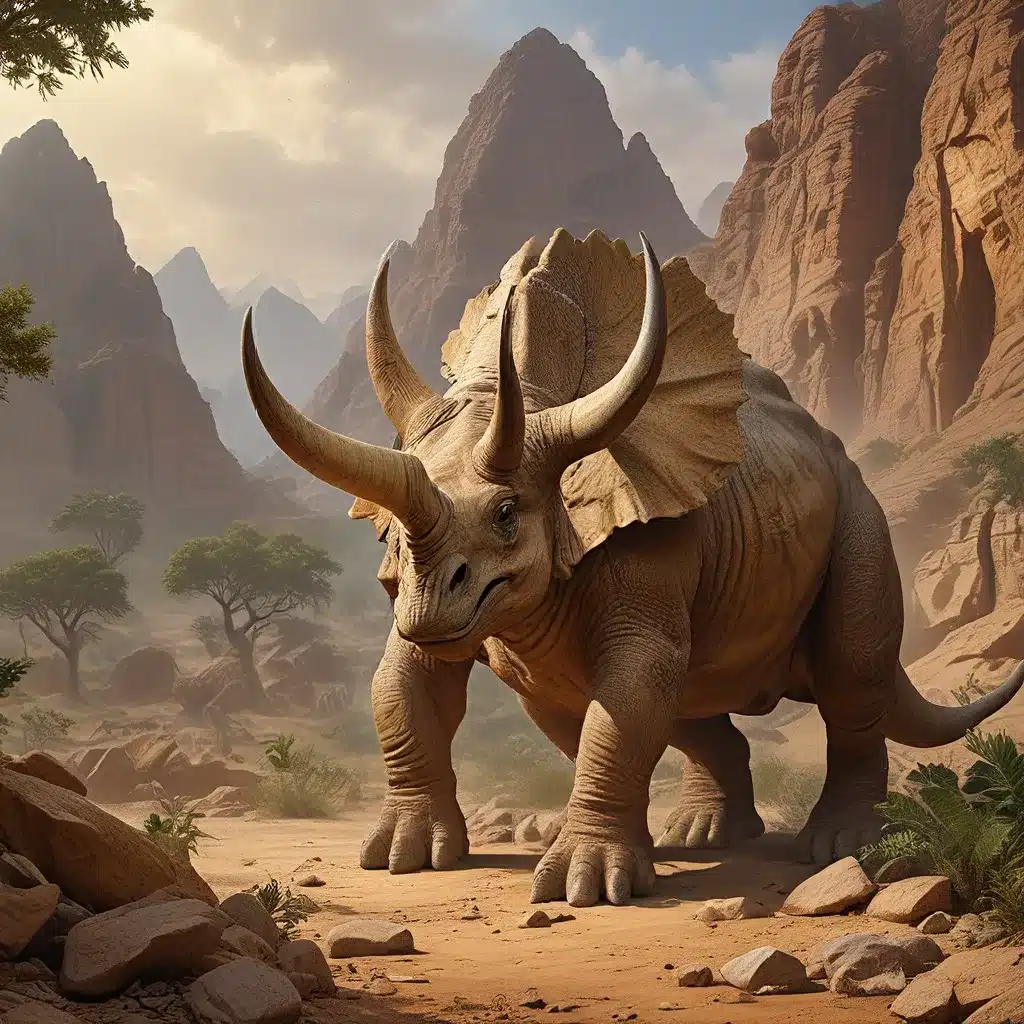
Uncovering the Mysteries of an Ancient Chultan Civilization
In the primordial jungle of Chult, deep within the tangled vines and towering canopies, lie the long-forgotten remnants of a once-thriving civilization. Archaeologists have only recently begun to unravel the intricate tapestry of this lost culture, revealing a fascinating glimpse into the spiritual and social foundations of a people who revered the mighty triceratops as divine protectors.
Nestled amidst the dense foliage, the ruined temple complexes of the Triceratops Worshippers stand as silent sentinels, guarding the secrets of a bygone era. These archaeological sites, long hidden from the outside world, have become the focus of intense exploration and scholarly inquiry, as researchers strive to piece together the rich tapestry of Chultan history.
Tracing the Origins of the Triceratops Worshippers
The origins of the Triceratops Worshippers can be traced back to the dawn of Chultan civilization, a time when the lush, untamed wilderness was home to a diverse array of prehistoric creatures, including the imposing and iconic triceratops. These massive, three-horned herbivores were revered by the indigenous people, who saw them as embodiments of strength, resilience, and protection.
According to ancient legends, the Triceratops Worshippers believed that the triceratops were not only physical manifestations of their deities, but also served as guardians of the land, fending off threats from both the natural and supernatural realms. This deep-rooted spiritual connection with the triceratops shaped every aspect of their culture, from their religious practices to their architectural design.
Uncovering the Lost Temples
The rediscovery of the Triceratops Worshippers’ temple complexes in Chult has been a groundbreaking moment in the field of archaeology, offering unprecedented insights into the beliefs, customs, and societal structures of this long-forgotten civilization.
Archaeologists have painstakingly excavated and documented these sites, revealing an intricate network of structures that were dedicated to the veneration of the triceratops. These temples, adorned with elaborate carvings and murals depicting the majestic creatures, were the epicenters of religious and cultural life for the Triceratops Worshippers.
One of the most remarkable discoveries has been the discovery of a vast underground network of tunnels and chambers, which were believed to have served as sacred spaces for rituals, ceremonies, and the interment of revered members of the community. These subterranean complexes, with their intricate carvings and symbolic motifs, have provided invaluable clues about the spiritual practices and cosmological beliefs of the Triceratops Worshippers.
Deciphering the Triceratops Cult
As the exploration of the Triceratops Worshippers’ temple complexes continues, researchers have been able to piece together a more comprehensive understanding of the cult’s inner workings and its central role in the Chultan society.
Through the analysis of artifacts, inscriptions, and architectural features, scholars have determined that the Triceratops Worshippers were a highly organized and hierarchical society, with priests and nobility playing a crucial role in the administration and perpetuation of their religious beliefs.
The discovery of elaborate ceremonial chambers and ritualistic objects, such as carved triceratops figurines and ceremonial headdresses, has shed light on the intricate rituals and rites of passage that were central to the Triceratops cult. These findings have also revealed the deep spiritual and symbolic significance that the triceratops held for the Chultan people, who saw them as embodiments of divine power and protection.
The Fate of the Triceratops Worshippers
Despite the wealth of information that has been uncovered through the archaeological exploration of the Triceratops Worshippers’ temple complexes, the ultimate fate of this ancient civilization remains shrouded in mystery.
Theories abound as to what ultimately led to the downfall of the Triceratops Worshippers, with some scholars suggesting that natural disasters, disease, or warfare may have contributed to their demise. Others have speculated that the civilization may have simply declined over time, as shifts in cultural and religious priorities occurred within the Chultan region.
Regardless of the exact circumstances that led to their disappearance, the Triceratops Worshippers have left an indelible mark on the history and cultural landscape of Chult. Their legacy continues to captivate the imagination of archaeologists, historians, and enthusiasts alike, who are driven to uncover the remaining secrets of this enigmatic civilization.
Continuing Exploration and Preservation Efforts
As the exploration and excavation of the Triceratops Worshippers’ temple complexes continues, researchers are faced with the challenge of preserving and protecting these invaluable archaeological treasures from the ravages of time and the threats of natural and human interference.
Collaborative efforts between local and international organizations, government agencies, and indigenous communities have been crucial in safeguarding these sites and ensuring that the knowledge and understanding of the Triceratops Worshippers’ legacy is passed down to future generations.
Through continued research, excavation, and preservation initiatives, the world may yet uncover more insights into the fascinating and enigmatic civilization that worshipped the mighty triceratops in the ancient jungles of Chult.


